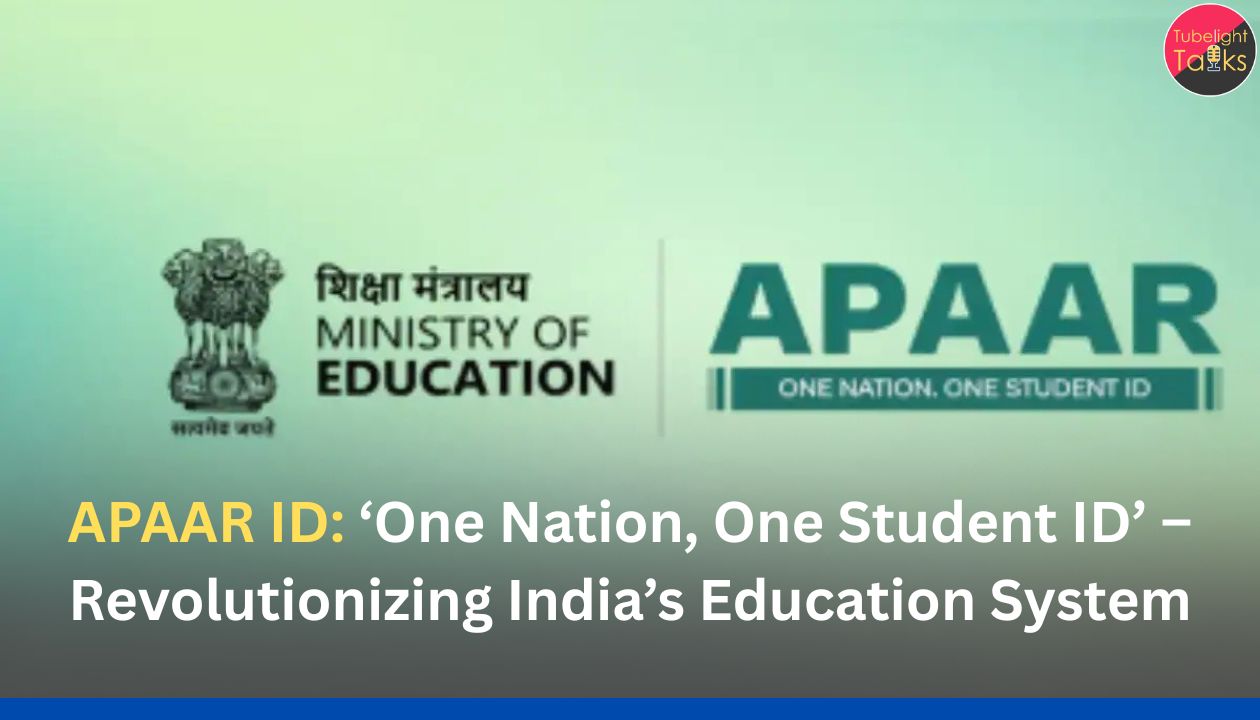India’s ambitious Digital Education transformation just reached a new milestone with the launch of APAAR ID (Automated Permanent Academic Account Registry), popularly known as the ‘One Nation, One Student ID’ initiative.
Driven by NCERT, the Ministry of Education, and the National Education Policy (NEP) 2020, this system aims to give each student in India a unique lifelong digital ID that tracks their academic journey from pre-primary to higher education and beyond.
In this comprehensive guide article, we’ll explore:
- What is APAAR ID?
- How to register for APAAR
- Key features and benefits
- Concerns & parental consent
- Future of student data in India
What is APAAR ID?
APAAR stands for Automated Permanent Academic Account Registry — a centralized digital ID assigned to every student across India.
Similar to a Digital Academic Passport, this ID stores and links:
- Academic performance
- Certificates and degrees
- Co-curricular activities
- Vocational & skill achievements
- Credit-based learning history (under NEP)
It’s part of the Academic Bank of Credits (ABC) framework and integrates with DigiLocker and other government educational databases.
Key Concept:
APAAR is student-centric — it follows the student throughout their education, regardless of institution or location changes.
Why APAAR? The Need for a Unified Student Identity
India has over 25 crore students, many of whom change schools or states over time. Academic records often get lost, duplicated, or difficult to retrieve.
APAAR solves this problem by:
- Creating a single academic identity per student
- Ensuring verified, tamper-proof academic records
- Supporting inter-state and inter-board mobility
- Enabling credit-based learning under NEP 2020
It is a major step towards a digitally connected national education ecosystem.
How Does APAAR Work?
Once created, an APAAR ID:
- Becomes part of the Academic Bank of Credits (ABC)
- Links to the student’s DigiLocker account
- Is accessible by the student, parent, and institution
- Stores educational milestones, certificates, and skill records
Even after school or college, the ID can be used for:
- Competitive exams
- Higher education admissions
- Employment background verification
- Lifelong learning programs
Who Issues the APAAR ID?
Schools, colleges, and universities registered with the government initiate the APAAR registration process through a centralized portal.
It is supervised by:
- Ministry of Education (MoE)
- NCERT (for schools)
- UGC/AICTE (for colleges)
- DigiLocker and ABC portal
Registration Process – How to Get APAAR ID?
Step-by-step Guide
- Student’s school or college initiates registration
- Parental consent is collected (especially for minors)
- Student’s details are submitted:
- Name, DOB, Aadhaar/alternative ID
- UDISE+ code (for schools)
- Educational history
- Name, DOB, Aadhaar/alternative ID
- Institution uploads data to ABC portal
- APAAR ID is generated
- Student receives ID via DigiLocker or school portal
Mandatory Documents:
- Aadhaar card (or alternate ID for minors)
- Mobile number
- Email ID
- Student photo (for card)
Top Features of APAAR ID
| Feature | Description |
| Lifelong ID | Follows student from school to university |
| Digital Record Storage | All certificates, marksheets, credits |
| Verified & Secure | Tamper-proof digital credentials |
| Mobility Friendly | Works across schools, boards, states |
| Supports Credit Transfer | Under NEP’s Academic Bank of Credits |
| Linked with DigiLocker | For easy access on mobile or web |
Benefits of APAAR ID for Students, Parents, and Institutions
Visit apaar.education.gov.in or contact your school administration.
For Students:
- One-click access to academic history
- Easier college applications and transfers
- Unified portfolio of certificates, degrees & skills
- Credit transfer for flexible learning
For Parents:
- Real-time tracking of child’s academic record
- Reduction in lost paperwork and duplication
- Verified documentation during migration
For Institutions:
- Simplified student verification
- Integration with UDISE+ and examination portals
- Easy issuing of digital certificates
APAAR and NEP 2020: A Perfect Fit
APAAR plays a key enabling role in implementing the National Education Policy (NEP) 2020.
It supports:
- Academic Bank of Credits (ABC)
- Multidisciplinary, modular education
- Recognition of prior learning
- Digital infrastructure for education
This shift from rigid education paths to flexible, lifelong learning is made possible through APAAR.
Privacy, Consent & Concerns
While the APAAR system brings many benefits, data privacy and student consent are key concerns.
Key Safeguards:
- Parental consent is mandatory for minors
- Data encrypted and stored securely
- No third-party sharing without permission
- Student can access and manage their data via DigiLocker
The Government has assured adherence to India’s Digital Personal Data Protection Act, 2023.
Challenges in Implementation
Despite its potential, APAAR faces challenges:
- Low awareness in rural/remote areas
- Institutional readiness varies
- Digital access gaps in low-income families
- Concerns over Aadhaar linkage
- State-level coordination with CBSE, ICSE, state boards
However, NCERT is running awareness campaigns and training programs to ensure smooth rollout.
APAAR ID Card Format (Example)
While digital-first, some schools are issuing printable APAAR cards with:
- Student Name
- APAAR ID Number
- UDISE Code
- Class/Board/Institution
- QR Code for instant verification
- DigiLocker or ABC link
These cards are optional and not a replacement for school/board-issued IDs, but act as an academic identifier.
Also Read: CBSE’s Two-Exam Year Begins 2026 for Class 10: Dates, Rules, Attendance, Results, and Class 12
FAQs About APAAR ID
Q1. Is APAAR ID mandatory for all students?
As of now, it is strongly encouraged but not mandatory. Future policies may integrate APAAR into admissions and examinations.
Q2. Can a student have multiple APAAR IDs?
No, one student = one lifelong APAAR ID. It follows them from school to college.
Q3. Is Aadhaar compulsory for APAAR?
Aadhaar is preferred, but alternate ID is allowed with parental consent.
Q4. Can parents access APAAR records?
Yes, through the registered DigiLocker account or institution portal.
Q5. Is APAAR only for CBSE schools?
No. APAAR is for all school boards and colleges in India, including private institutions.
Q6. How does it help in college admissions?
Colleges can fetch verified academic history, simplifying verification.
Q7. Can APAAR be used internationally?
It can help verify Indian academic records for foreign admissions once globally recognized systems are integrated.
Q8. Where can I get more info or help?
Visit apaar.education.gov.in or contact your school administration.
Final Take
APAAR ID is a powerful step toward a transparent, efficient, and digitally unified education system. With seamless academic tracking, cross-border credit transfer, and lifelong learner enablement, it reflects India’s digital-first education vision. As the system matures, APAAR will become as essential as Aadhaar — for every student, everywhere in India.










